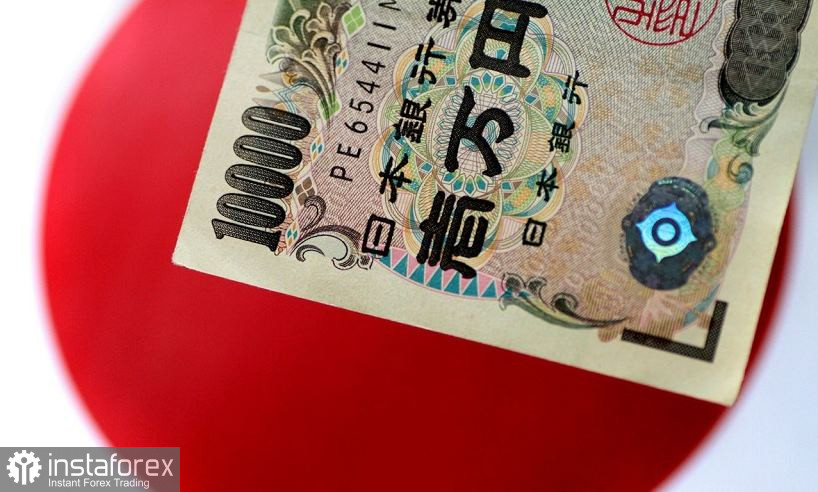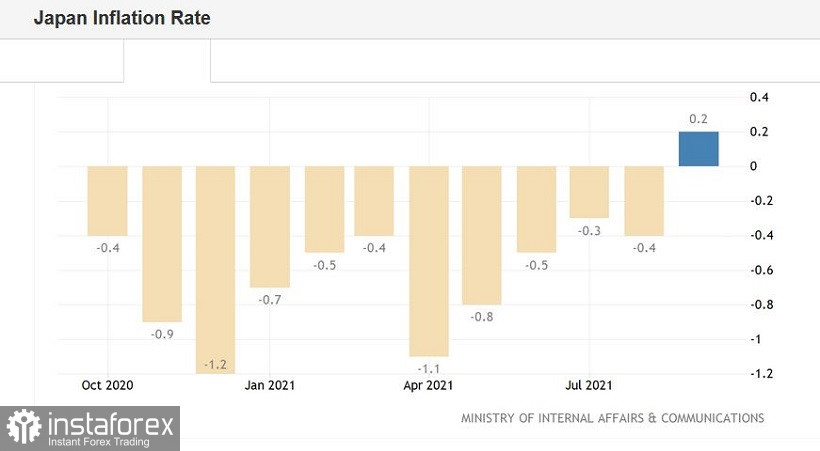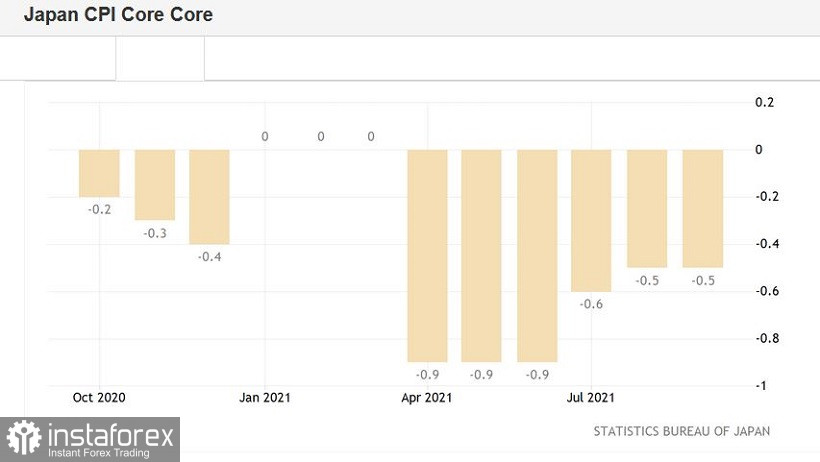The buyers of USD/JPY took a break after a four-week upward rally. Traders have made a 560-point march since the end of September, pushing the price from the level of 109.10 to a 4-year high of 114.79. This price surge was caused not only by the US dollar's strengthening, but also by the Japanese yen's weakness, which has recently reacted negatively to many fundamental factors, both domestic and foreign. Buyers were literally 30 points short of testing the area of 115 for the first time since spring 2017. However, the upward impulse faded, after which the pair consolidated in the range 113.60-114.40.
Today's publication of inflation data in Japan also provided slight support to the yen – sellers managed to test the lower limit of the above range during the Asian session on Friday. Still, we cannot speak of a trend reversal: many factors speak in favor of further growth of USD/JPY in the medium term, at least in the context of testing the borders of the 115th figure. In this case, Japanese inflation will not save the yen, since today's release also has its flaws.

On the one hand, the September release surprised with its "headline" indicator. The overall consumer price index in Japan not only came out in the "green zone", exceeding the forecast values, but also crossed the zero level for the first time since August 2020, ending up at 0.2%. For comparison, it can be noted that this indicator was at the level of -0.4% in August, and at the level of -1.1% in April. Therefore, today's breakthrough was really surprising. However, the other components of the release showed either weak or negative dynamics.
The consumer price index, excluding food prices, came out at around 0.1% after zero growth in August. But the CPI, excluding food and energy prices, was in the "red zone", dropping to the level of -0.5%. Considering the global energy crisis, which was already felt in September, one can come to a fairly obvious conclusion that the growth of the "headline" index of Japanese inflation was caused by temporary factors. Earlier, it was reported that Japanese electricity producers decided to raise electricity prices for the first time in 8 years. According to energy and gas companies across the country, the average monthly electricity bill for the average household will continue to be about 150-200 yen higher than in previous months. Bills for natural gas consumption by households will also increase.
All this suggests that the Bank of Japan will probably ignore the current inflationary dynamics, since the growth of indicators is temporary.
It is also worth noting here that yesterday's slight strengthening of the Japanese currency was not only due to the general weakness of the US currency. The USD/JPY pair collapsed to the level of 113.65 after the publication of the Reuters news agency. The journalists published an insider, according to which the Bank of Japan is "considering the possibility of gradually curtailing the support program that was introduced during the pandemic." According to the initial plans, this program should be completed in March next year (with a possible prolongation function). But some representatives of the Central Bank said that the need for emergency liquidity support is decreasing, so this issue can be considered earlier.


In my opinion, this information should be treated with skepticism. First, the members of the Board of Governors of the Bank of Japan have not reached a consensus on this issue according to the same Reuters news agency. Insiders of journalists admit that all of the above discussions are preliminary, and the decision itself will certainly not be made until at least December. Second, the official comments of representatives of the Japanese regulator are still "dovish". For example, Asahi Noguchi, a member of the Governing Council, recently stated that the regulator may need additional easing if the situation in the labor market does not improve. And although he admitted that we are not talking about short-term prospects, such a scenario is not excluded at all. At the same time, contrary to insider information from Reuters, he said that the Bank of Japan "may have no choice but to extend the validity of those lending programs that were introduced to mitigate the coronavirus strike." A similar position was voiced earlier by the head of the Japanese Central Bank, Haruhiko Kuroda, who said that the regulator would not hesitate resort to further easing of monetary policy, if necessary.
The uncorrelation of the Fed and the Bank of Japan rates will restrain USD/JPY sellers to break the upward trend for the pair, at least in the coming weeks, particularly until the meeting of the US regulator, the results of which will be announced on November 3. At the same time, the option of a prolonged flat in the 100-point range of 113.70-114.70 is not excluded, given the current consolidation after a multi-week growth. Short positions are risky, but long positions with declines to the lower limit of the above range look quite attractive. Technically, the pair has not exhausted its growth potential: on the daily chart, the price is located between the middle and upper lines of the Bollinger Bands indicator, as well as above all the lines of the Ichimoku indicator – including the Kumo cloud. The resistance level (the upward target) is the price high of 114.79.





















